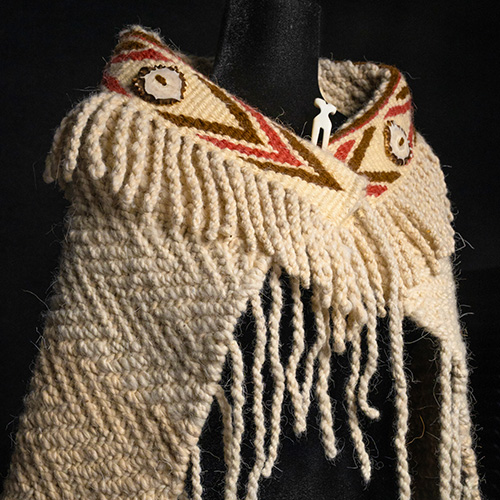Marcella Ernest (MA, Communication/Native Voices, 2007) is an Anishinaabe video artist and documentary filmmaker. In 2012 alone, her films have been in exhibits ranging from a five-month video exhibition at the Museum of Modern Art and Design in New York to a month of daily screenings at the Smithsonian National Museum of the American Indian. Her work also screened at the 2012 Seattle International Film Festival and the 2012 Nepal International Indigenous Film Festival.
When did you first become interested in film?

I have a box full of old VHS tapes of "movies" I made when I was a kid, maybe starting at fifth grade, with a few of my friends. We made a lot of skate videos and ninja videos, music videos, and we would re-create scenes form the movie Beaches. We made our credits roll by standing above the camera, out of scene, and rolling up a paper towel roll with our handwritten credits on it.
I started thinking about film seriously in 1999. My cousin worked at a movie theater that summer and I really enjoyed the environment of talking about films all the time and watching her prepare and project the 35 mm. Because of that, I took my first film course that fall—an S-8 film class in San Francisco. I was inspired by the instructor who made really incredible experimental pieces.
How has your experience with the Native Voices program—a UW graduate program in documentary filmmaking with an emphasis on Native American content—shaped you as a filmmaker?
Native Voices gave me an understanding of ethics and methods of filmmaking that is very specific to working with indigenous communities, but those lessons also apply to simply working respectfully with people. The program introduced me to documentary production concepts and the importance of critical research skills to tell a good story and ask solid questions. It shaped my ethics and responsibility as a filmmaker to respectfully tell other people's stories. Native Voices is also a supportive community of creative and intellectual filmmakers, many of whom have become like family.
How would you describe your films?
They are usually referred to as experimental films or experimental art pieces. But I like to think of them as experimental documentaries. I focus most of my work on documentaries, but within a non-linear experimental approach to both the visual and sound.
What is your primary consideration when developing an idea for a film?
My primary consideration is how to best represent my subject. I think about what methods to work with—what camera, what style—to best present the story and the person.
Does the concept change substantially during the filmmaking process?
It is never the same in the end. The only thing that stays the same from the initial concept to the final film is that I made it. I started it and I finished it. That has a lot to do with the experimental arts style. It becomes much more like a collage.
What are some of your all-time favorite films, which have inspired you as a filmmaker?
Shirin Neshat's Rapture and Soliloquy because Shirin Neshat's work engages gender issues in a smart and well executed way. She demonstrates instead of exploits culture in subtle yet complicated ways.
Dark Days by Marc Singer because his style and sound is really fresh and the aesthetic is very artistic.
My favorite movie of all time would probably be E.T. because it's a good story.
More Stories

A Healing Heart Returns
In February, the UW Symphony will perform a symphony that Coast Salish elder Vi Hilbert commissioned years ago to heal the world after the heartbreak of 9/11. The symphony was first performed by the Seattle Symphony in 2006.

Coast Salish Traditions are "Woven in Wool" at the Burke
A Burke Museum exhibit, co-curated by Coast Salish weavers and Burke curators, highlights the importance of weaving to Coast Salish communities.

Capturing the Sounds of Campus
With "University of Washington Soundscape," ethnomusicology and international studies major Leo Freedman has created an audio experience of the UW campus.